 ‘Four things to see this week’ is sponsored by Bloomberg Connects, the free arts and culture app. Bloomberg Connects lets you access museums, galleries and cultural spaces around the world on demand. Download the app here to access digital guides and explore a variety of content.
‘Four things to see this week’ is sponsored by Bloomberg Connects, the free arts and culture app. Bloomberg Connects lets you access museums, galleries and cultural spaces around the world on demand. Download the app here to access digital guides and explore a variety of content.
Each week we bring you four of the most interesting objects from the world’s museums, galleries and art institutions, hand-picked to mark significant moments in the calendar.
While the Elizabethan era is associated with what’s known as the ‘English Renaissance’, this had little to do with Elizabeth I herself, who was not a major patron of the arts. Playwrights such as William Shakespeare and Christopher Marlowe flourished at this time, but only the poet Edmund Spenser was awarded a pension from the queen. Credit is due instead to the individual artists, writers, architects and musicians who shaped the art of the period.
The reign of Elizabeth I is remembered for the return of Protestant rule and the defeat of the Spanish Armada in 1588, but this was also an important moment for England’s colonial ambitions. Walter Raleigh claimed the territory of Virginia – then much bigger than in its present form – in the Queen’s name in 1583, and in 1600 Elizabeth I gave the East India Company a monopoly on trade with all countries east of the Cape of Good Hope and west of the Straits of Magellan.
Here we look at four things that represent the culture and politics of Elizabeth I’s reign.
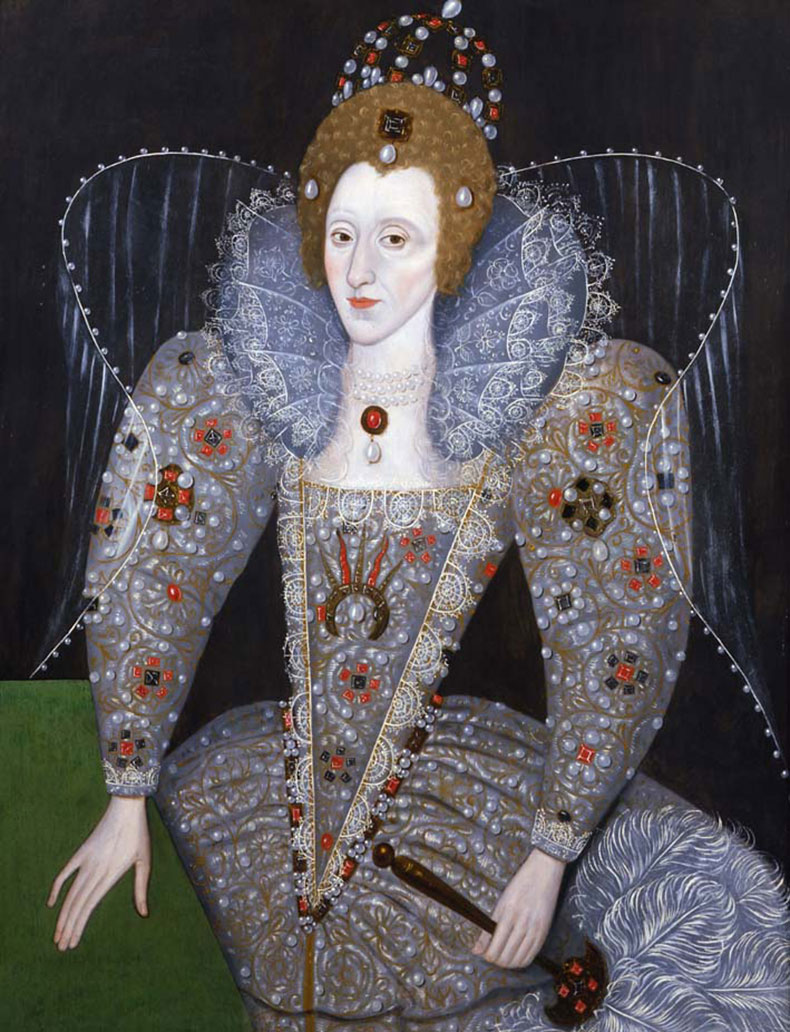
Queen Elizabeth I (c. 1590), unknown artist. Compton Verney, Warwickshire. © Compton Verney
1. Queen Elizabeth I (c. 1590), unknown artist
Compton Verney, Warwickshire
As the head of the ‘body politic’, the queen had to project and maintain a certain image. This image, as carefully constructed as that of any celebrity today, was disseminated through commissioned portraits that were widely distributed in print. In this painting we see the queen at the end of her reign, complete with the poisonous lead-white makeup and fiery red wig that made her instantly recognisable. Click here to find out more on the Bloomberg Connects app.
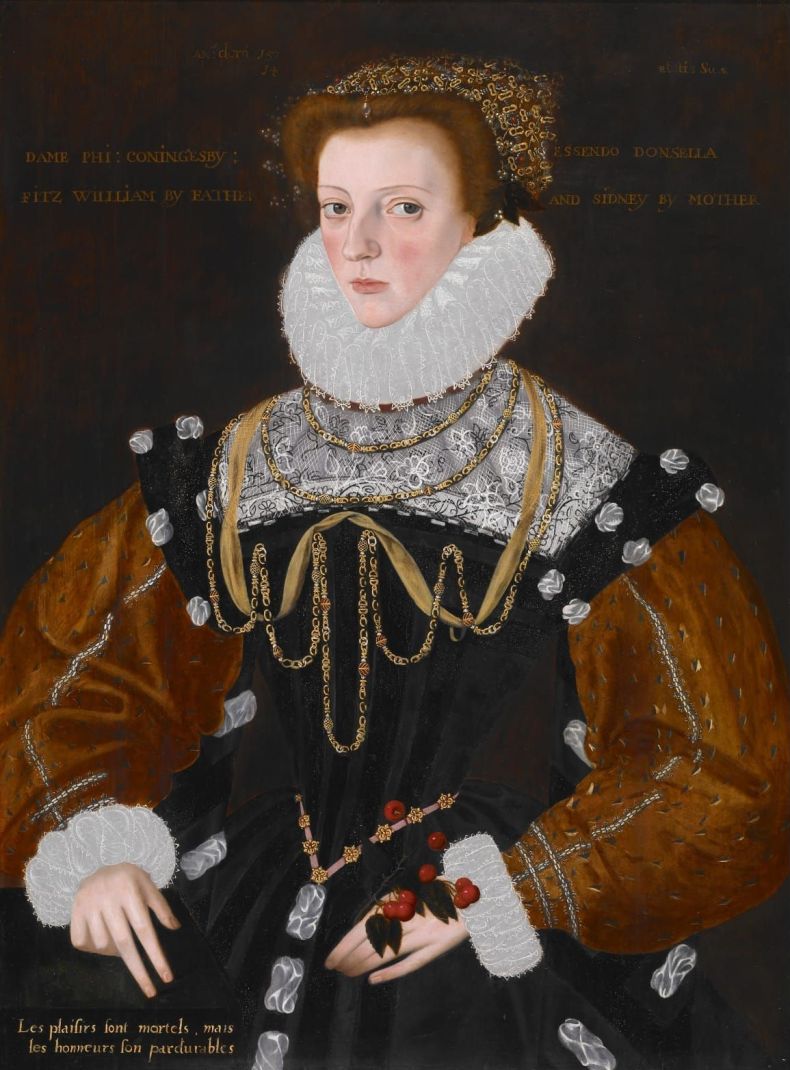
Lady Philippa Coningsby (1578), George Gower. Indianapolis Museum of Art at Newfields
2. Lady Philippa Coningsby (1578), George Gower
Indianapolis Museum of Art at Newfields
George Gower held the lucrative position of ‘Serjeant painter’ to Queen Elizabeth from 1581 until the end of her reign. In this work he portrays Lady Philippa Coningsby, wife of Thomas Coningsby, a politician who is said to have been the model for Sir Puntavarlo in Ben Jonson’s satirical play Every Man out of His Humour (1599). Her ruffed dress is draped in ribbons and chains and she holds a sprig of cherries that symbolise transience, a sentiment that is emphasised by the painting’s inscription: ‘Pleasure dies but honour endures.’ Click here to find out more.
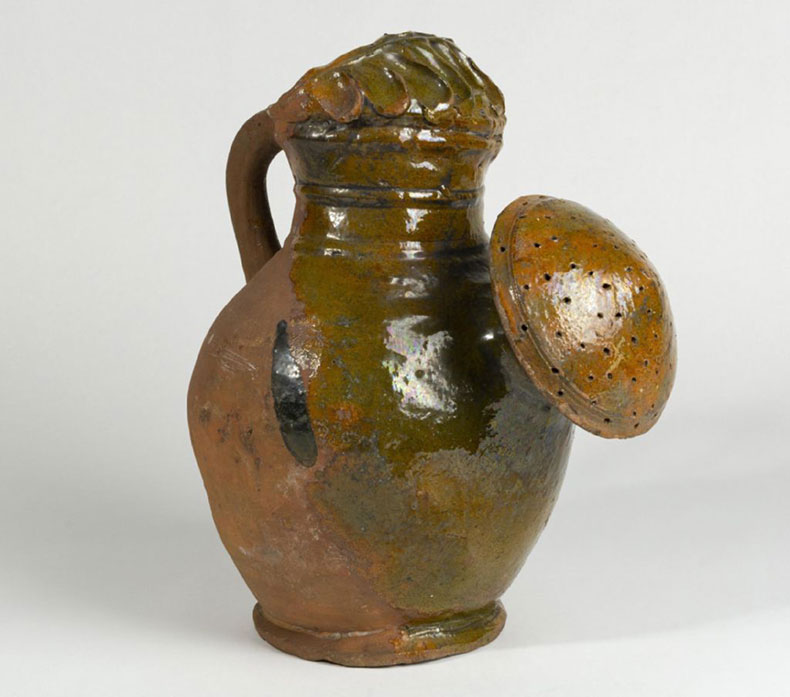
Watering-pot of the rose type (Tudor period). Hunt Museum, Limerick
3. Watering-pot of the rose type (Tudor period)
Hunt Museum, Limerick
This ceramic watering can reflects the importance of gardens to the Tudor court – monarchs such as Henry VII favoured symmetrical ‘knot’ designs that symbolised control over the unruliness of nature and, by proxy, dominion over their kingdom. In 1575 Robert Dudley, 1st Earl of Leicester, created an elaborate garden – featuring fountains, fish and a bejewelled aviary, alongside ‘deliciously variant’ flowers and trees – designed to be so heavenly as to win Elizabeth I’s hand in marriage. As it turned out, the ‘Virgin Queen’ was not sufficiently impressed. Click here to find out more.
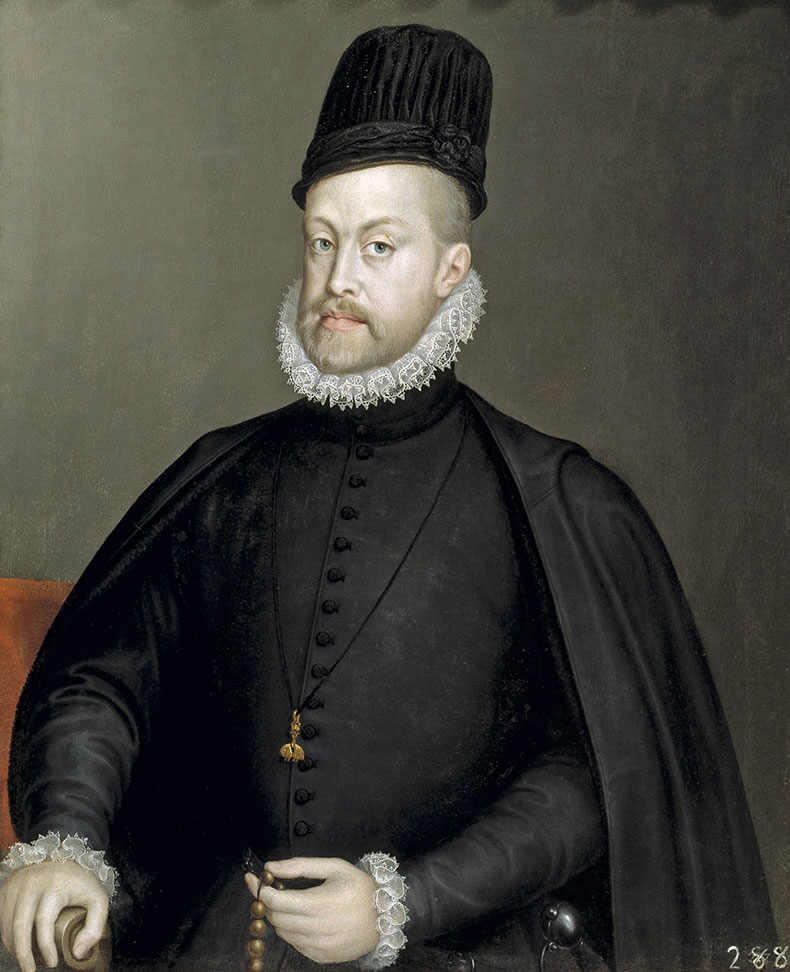
Phillip II (1573), Sofonisba Anguissola. Museo del Prado, Madrid
4. Phillip II (1573), Sofonisba Anguissola
Museo del Prado, Madrid
While Elizabeth I was more cautious in matters of foreign affairs than her father, Henry VIII, she could not avoid certain conflicts; perhaps her best-known political act was overseeing Francis Drake’s defeat of the Spanish Armada. In this portrait of King Phillip II of Spain, Sofonisba Anguissola portrays the monarch who launched la felicissima armada in an attempt to invade England. Click here to find out more.
Download now
![]() ‘Four things to see this week’ is sponsored by Bloomberg Connects, the free arts and culture app. Bloomberg Connects lets you access museums, galleries and cultural spaces around the world on demand. Download the app here to access digital guides and explore a variety of content or scan the QR code.
‘Four things to see this week’ is sponsored by Bloomberg Connects, the free arts and culture app. Bloomberg Connects lets you access museums, galleries and cultural spaces around the world on demand. Download the app here to access digital guides and explore a variety of content or scan the QR code.
Unlimited access from just $16 every 3 months
Subscribe to get unlimited and exclusive access to the top art stories, interviews and exhibition reviews.

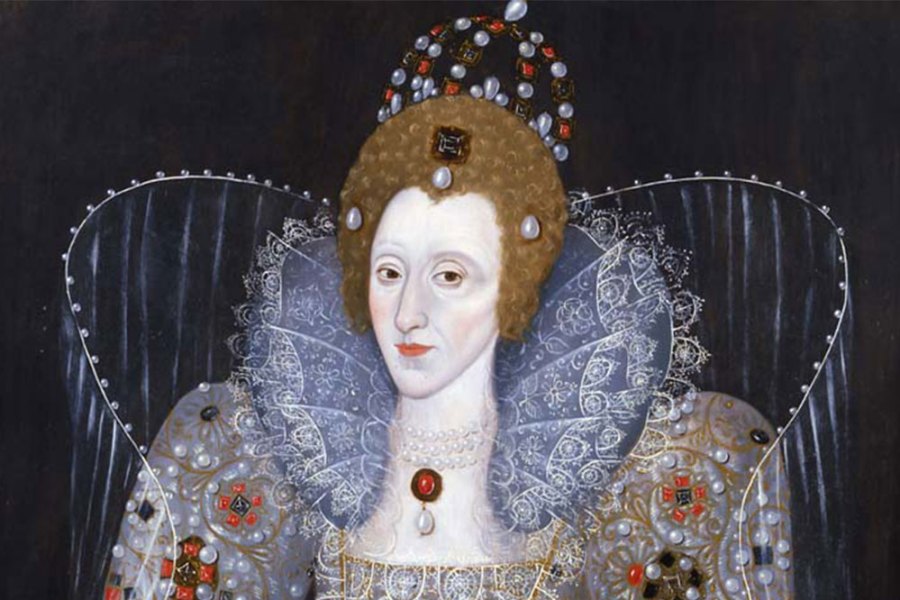
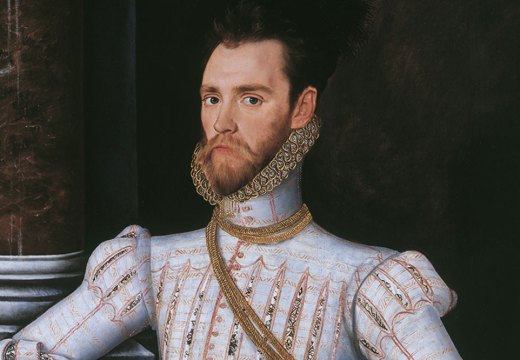

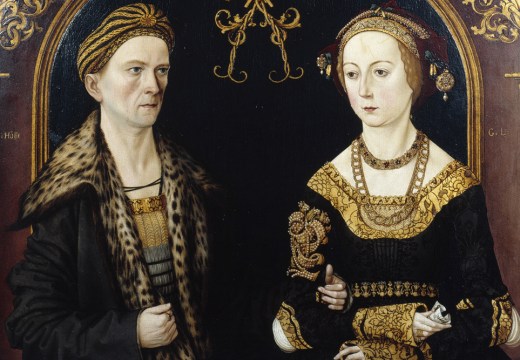

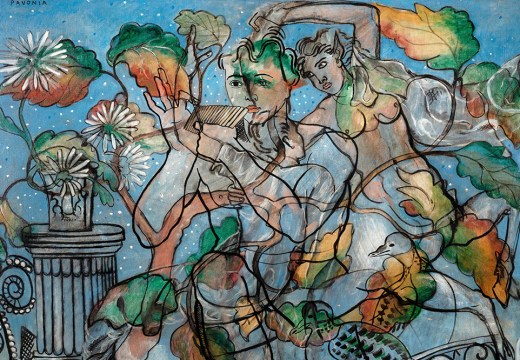







![Masterpiece [Re]discovery 2022. Photo: Ben Fisher Photography, courtesy of Masterpiece London](http://www.apollo-magazine.com/wp-content/uploads/2022/07/MPL2022_4263.jpg)
Has arts punditry become a perk for politicos?